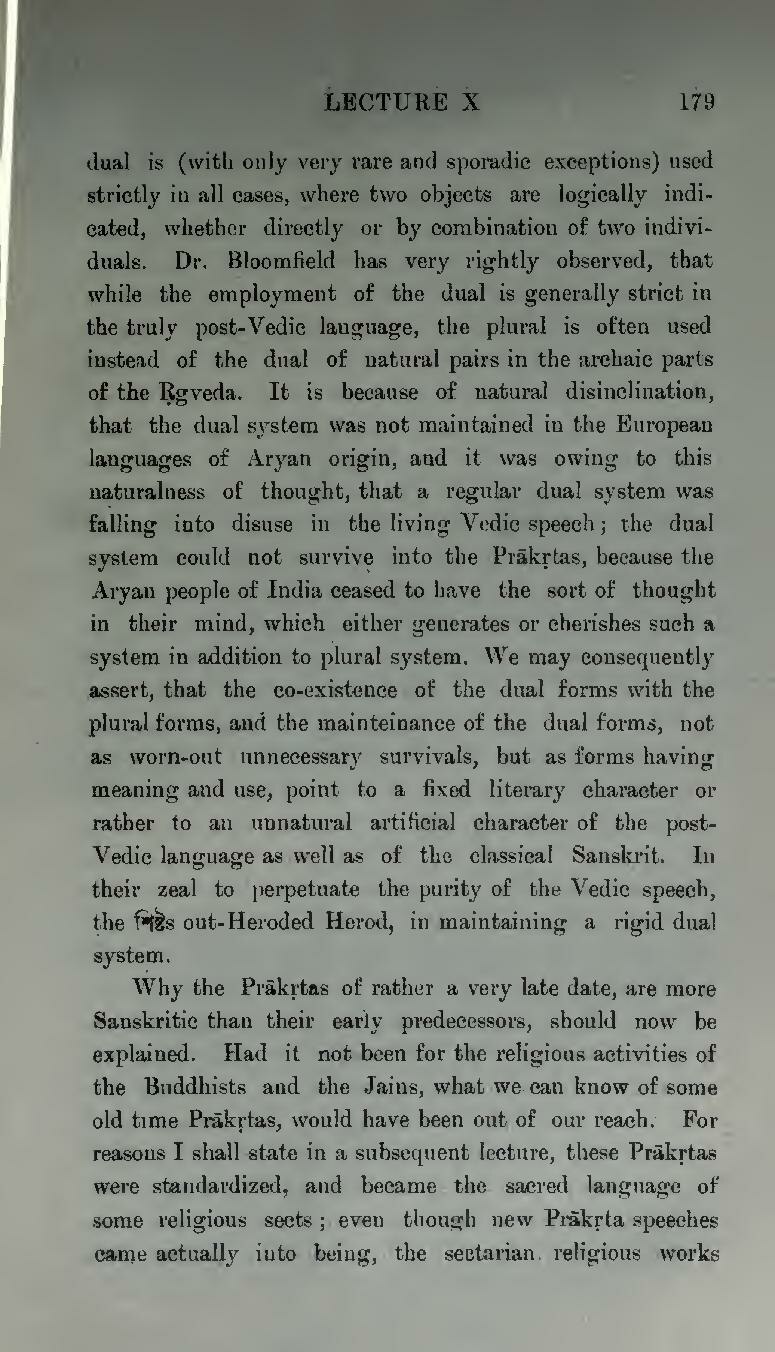dual is (with only very rare and sporadic exceptions) used strictly in all cases, where two objects are logically indicated, whether directly or by combination of two individuals. Dr. Bloomfield has very rightly observed, that while the employment of the dual is generally strict in the truly post-Vedic language, the plural is often used instead of the dual of natural pairs in the archaic parts of the Ṛgveda. It is because of natural disinclination, that the dual system was not maintained in the European languages of Aryan origin, and it was owing to this naturalness of thought, that a regular dual system was falling into disuse in the living Vedic speech; the dual system could not survive into the Prākṛtas, because the Aryan people of India ceased to have the sort of thought in their mind, which either generates or cherishes such a system in addition to plural system. We may consequently assert, that the co-existence of the dual forms with the plural forms, and the maintenance of the dual forms, not as worn-out unnecessary survivals, but as forms having meaning and use, point to a fixed literary character or rather to an unnatural artificial character of the post-Vedic language as well as of the classical Sanskrit. In their zeal to perpetuate the purity of the Vedic speech, the শিষ্টs out-Heroded Herod, in maintaining a rigid dual system.
Why the Prākṛtas of rather a very late date, are more Sanskritic than their early predecessors, should now be explained. Had it not been for the religious activities of the Buddhists and the Jains, what we can know of some old time Prākṛtas, would have been out of our reach. For reasons I shall state in a subsequent lecture, these Prākṛtas were standardized, and became the sacred language of some religious sects; even though new Prākṛta speeches came actually into being, the sectarian religious works
